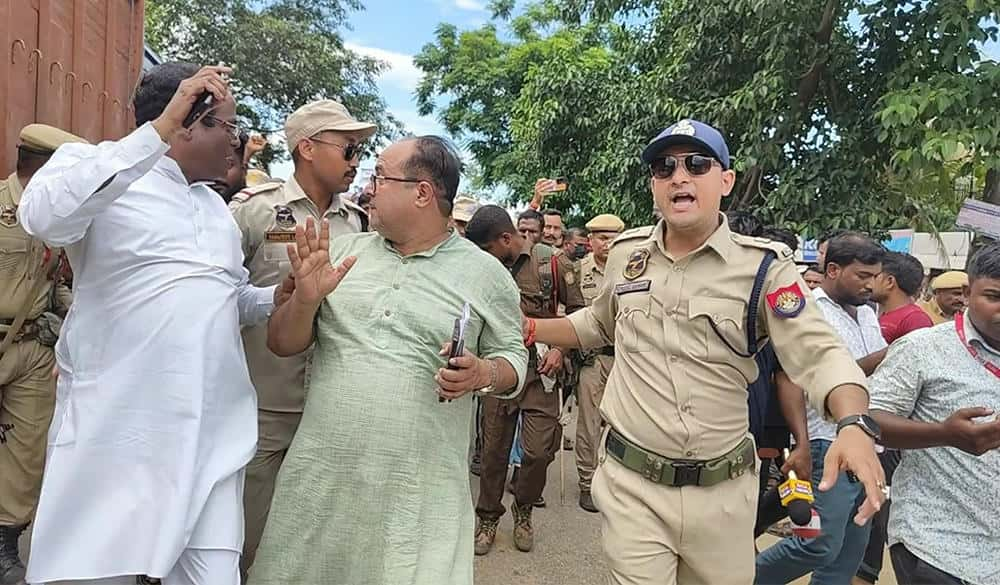9 AIUDF MLAs detained while protesting mass eviction for Adani project in Bilasipara

Nine MLAs from the All India United Democratic Front (AIUDF) were detained by police on Thursday during a protest against a large-scale eviction drive in Chapar, Bilasipara, where over 1,600 families were displaced to make way for a proposed Adani thermal power plant.
The legislators had travelled to Chirakuta in Dhubri district to join locals protesting the July 8 eviction, which cleared more than 3,500 bighas of khas land across the revenue villages of Santoshpur, Charuabakhra, and Chirakuta Parts 1 and 2. The operation, one of the largest of its kind in Assam, was carried out under heavy police and paramilitary presence.
According to the district administration, approximately 95 per cent of the residents had vacated their homes following official eviction notices. However, many stayed until the final day. Additional District Commissioner Santana Borah said a one-time rehabilitation grant of Rs 50,000 was offered to each displaced family. But opposition leaders and affected residents claim that only a handful actually received any compensation, leaving the majority without shelter or support.
AIUDF spokesperson Haidar Borah confirmed that the detained MLAs—Hafiz Basir Ahmed Qasimi, Aminul Islam, Karimuddin Barbhuyan, Dr. Hafiz Rafiqul Islam, Mujibur Rahman, Nazrul Haque, Samsul Huda, Nizanur Rahman, and Asraful Hussain—joined the protest at the invitation of the evicted families. “The MLAs addressed the crowd at Chirakuta to express solidarity with those displaced,” Borah said.
Police intervened shortly after the protest began, detaining the legislators and escorting them to Chapar Police Station. They were later released on personal recognizance (PR) bonds.
The eviction has sparked widespread backlash from political parties and human rights organizations, who have raised concerns over the alleged targeting of minority Muslim communities and the lack of a credible rehabilitation plan. The incident has intensified the debate around development-driven displacement and the role of corporate-backed infrastructure projects in vulnerable areas.





Leave a Reply